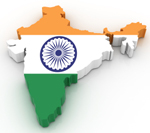 In India, the Central Drugs Standards Control Organization (CDSCO) is the regulatory authority responsible for establishing the standards for drugs (including biological products), cosmetics, diagnostics and devices; developing regulatory measures, amendments to Acts and Rules, and drug control administration in India. However, in the context of the regulation of cellular therapy products, other government organizations have also developed guidelines to assist CDSCO in the regulation of cellular therapy products. Guidelines, which are considered federal provisions for facilities to follow, have been developed for stem cell research and cord blood banking. Brief summaries of current guidelines and regulations for cellular therapy products are discussed below.
In India, the Central Drugs Standards Control Organization (CDSCO) is the regulatory authority responsible for establishing the standards for drugs (including biological products), cosmetics, diagnostics and devices; developing regulatory measures, amendments to Acts and Rules, and drug control administration in India. However, in the context of the regulation of cellular therapy products, other government organizations have also developed guidelines to assist CDSCO in the regulation of cellular therapy products. Guidelines, which are considered federal provisions for facilities to follow, have been developed for stem cell research and cord blood banking. Brief summaries of current guidelines and regulations for cellular therapy products are discussed below.
The Indian Council of Medical Research (ICMR) and the Department of Biotechnology (DBT) established Guidelines for Stem Cell Research and Therapy in 2007. In brief, these guidelines focus on the review and monitoring of research and therapy for cellular therapy products at the national and institutional levels. The stem cell research guidelines also established three categories of stem cells: human embryonic stem cells, human embryonic germ cells, and human somatic stem cells. The guidelines define the three categories under which human stem cells can be researched based on the source of stem cells and nature of the experiments, which are permissible, restricted, and prohibited research areas. Annex IV of the stem cell research guidelines establishes the standards for collection, processing, and storage of cells primarily for adult cells derived from blood and marrow, corneal limbus, and cartilage. These standards include, but are not limited to, infectious disease testing requirements for the donor, donor evaluation and management, product labeling, and recordkeeping.
The Drug Controller General of India (DGCI) within CDSCO established guidelines for cord blood banking by amending the Drugs and Cosmetics Rules of 1945. These cord blood banking guidelines, which became effective in 2012, are applicable to cord blood units intended for autologous and allogeneic use and are designed to provide a framework for facilities to obtain a license to manufacture and distribute cord blood in India. The guidelines outline the collection, processing, testing, storage, banking, and release requirements for umbilical cord blood. With respect to building and room requirements, the regulations set forth measures to minimize the risk of contamination from external environmental factors. The cord blood regulations also define screening requirements which includes hepatitis B, hepatitis C, human immunodeficiency virus 1 and 2, syphilis, malaria, cytomegalovirus, and human T-lymphotropic virus I and II. The regulations also require that the cord blood unit be tested for total nucleated cell count, total mononuclear cell count, CD34+ count, cell viability, ABO group and Rh type, sterility tests for bacterial and fungal contamination, and HLA matching (for allogeneic units only).
In India, it is mandatory to register a clinical with ICMR before enrolling the first subject in the study. Given the current knowledge and evidence, only hematopoietic stem cell transplants for blood diseases and limbal stem cell transplants for corneal diseases can be performed as standard therapy outside of clinical trials in India. All other forms of stem cell transplants, including those with blood or marrow derived stem cells, cord blood stem cells, mesenchymal stem cells and any embryonic stem cell derived tissue should only be used within an appropriately reviewed and monitored clinical trial that has been registered on the ICMR registry.